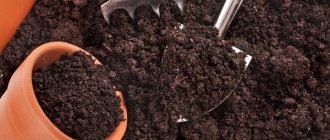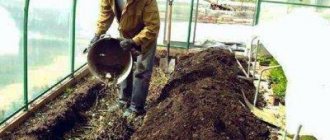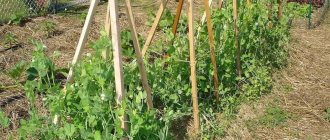How to properly feed blueberries with water and vinegar
Diluting vinegar in the right proportions, rules for acidifying the soil and applying fertilizers, and regular watering are necessary conditions for the growth and fruiting of blueberries.
For example, so that the bushes receive nitrogen and other elements from the soil, fertilize blueberries with vinegar at the root of the plant.
How to dilute vinegar for feeding in spring: proportions
A bush that has frozen in development and red leaves on blueberries in spring indicate that the plant does not have enough nutrition. Due to insufficient soil acidity, minerals are not absorbed. Therefore, the first feeding is needed at the end of May.
To improve acidity, water blueberries with vinegar diluted according to one of the following recipes:
- 1 tsp a spoonful of citric or oxalic acid per 3 liters of water;
- 100 ml of 9% acetic acid or the same amount of malic acid per 10 liters of water;
- 1 tbsp. 70% vinegar essence per 10 liters of water.
Watch the video “Feeding with vinegar”:
How to properly acidify the soil
9% vinegar helps determine soil acidity quickly and inexpensively:
- Scoop up soil from a depth of 30 cm.
- Place the soil on a piece of oilcloth.
- Pour in vinegar.
- Watch the reaction:
- Bubbles have appeared - the soil is alkaline;
- weak hiss – neutral;
- There is no reaction to vinegar - the soil is acidic.
Author's note Olga Kirilova
Buy testers - litmus papers. They show the degree of acidity of the soil by changing color.
The normal pH range is 4–5.5.
If the soil on the site is slightly acidic, you can correct the composition yourself using various means.
Soil acidity is increased with solutions or fertilizers.
| For 1 sq.m of land the following is planted: | Fertilizers: |
| - 5 g of citric acid powder in 10 liters of water; - 100 g of acetic acid in 10 liters of water, used in exceptional cases; — 1 liter of water with a drop of concentrated sulfuric acid; - 5 g of sorrel in 20 liters of water, the solution is poured into the wells; - 30 ml of electrolyte oxidizer per 10 liters of water. | - 15 g of powdered sulfur is distributed under the bush on damp ground; - before the bush is planted in a hole, living organic matter is placed in it: pine needles, sand, sawdust or peat. |
“8 ways to acidify soil for blueberries”:
What plants need acidic soil?
However, blueberries are not the only ones that need acidic soil. Many other types of plants can also grow and develop normally only in soil with a low pH level. Berry crops include lingonberries, blueberries and cranberries. Quite a few shrub plants also need acidic soil - wild rosemary, rhododendron, heather, azaleas. Speaking about perennials, it is worth noting fern, dientra, gravilate and primrose.
If you plan to grow any of these plants on your plot, it would be a good idea to remember the need to regularly acidify the soil.
How are garden blueberries different? Photos are attached!
Before you start studying this berry crop in detail, you need to know the history of its origin. How do garden blueberries differ from their natural “wild” counterparts?
This page contains photos of garden varieties, which are primarily distinguished by higher growth of shoots and a large number of berries on 1 stem.
In addition, it is worth paying attention to the size of the berries and the yield from 1 bush. The prototype of this culture is the wild marsh berry, which grows in nature on peat bogs and in marshy areas.
The prototype of this culture is the wild marsh berry, which grows in nature on peat bogs and in marshy areas.
The prototype of this culture is the wild swamp berry, which grows in nature on peat bogs and in marshy areas.
Its prevalence in a large number of regions is explained by its excellent resistance to unfavorable growing conditions. These plants thrive even in tundra conditions, complementing the sparse landscape of this area.
In the wild, one bush can grow well and bear fruit for more than 50 years.
In culture, such indicators are difficult to achieve, since rejuvenation of the branching part does not occur. Therefore, garden blueberries are usually replanted with new cuttings at least once every 6 years. Otherwise, the yield drops catastrophically due to a decrease in the size of the berries.
Popular wisdom subtly noted all the beneficial and amazing properties of this berry. So, for its love for the neighborhood with wild rosemary, the culture is called a drunkard. This is due to the fact that during the ripening period of the berries it is usually hot; this condition contributes to the release of a large amount of specific essential oils by wild rosemary.
When they are inhaled, a person becomes slightly intoxicated. It goes without saying that the next day you will have a headache, like a hangover. Therefore, it is natural to have another name - hemlock.
But the popular name blueberry is explained even more simply. The berry secretes a characteristic blue juice that stains hands, fabrics and everything it comes into contact with blue.
How else do garden blueberries differ from their wild counterparts besides their higher growth (70 cm versus 25-30 cm in the wild)? Well, at least the period of entry into fruiting.
In nature, this berry takes a long time to develop; it requires at least 15 years of growth and development in order to produce the first berries. But with garden varieties everything is much simpler.
Most of them begin to produce moderate yields already in the second year after planting. The bushes reach full strength 3 years after planting.
Look at the photo of garden blueberries - the elegance and grace of the bushes strewn with clusters of magnificent aromatic berries:
How to care and what to add to the soil in the off-season
The next year after planting, it is necessary to fertilize. Complex feeding includes ammonium sulfate (90 grams), superphosphates (110 grams), potassium sulfate (40 grams). The ingredients are mixed and applied under each bush in the spring. .
Important components of care are also pruning, watering and protection from disease.
- Pruning is carried out in the third year after planting to improve crop growth. Remove dried shoots and thin out the crown if necessary. If the bushes are tall, then they are shaped, giving the crown a complete harmonious look.
- Watering is carried out in such a way that the bushes are always in moist, but not waterlogged soil. Do not allow it to dry out or stagnate. It is recommended to water once every three days. When hot days come, the frequency is increased and spraying of the bushes with cool water is added.
- To protect against diseases and for preventive purposes, bushes are treated with fungicides (Euparen or Topsin).
The best types of fertilizers, their dosages and proportions
In order to properly apply fertilizer, it is necessary to accurately calculate the proportions and select the type of fertilizer. The type of feeding will depend on the problem that needs to be solved and the time of year when the nutritional components are applied.
Nitrogen
Preparations containing nitrogen are necessary for the active growth of the plant, so fertilizing must be done in early spring. Also, the absence of this type of nutritional components can lead to the absence of buds on the bushes. The lack of nitrogen leads to incomplete ripening of the crop and poor taste.
Terms and rules for how to propagate blueberries at home
Read
The following mineral preparations containing nitrogen can be used:
- Urea - for use, 20 grams of granules are diluted in 10 liters of clean water.
- Ammonium nitrate - 30 grams of the substance per 10 liters of clean water.
- Nitroammofoska - this type of mineral fertilizer contains a complex of useful components, such as potassium, magnesium, nitrogen. To fertilize blueberries, you need to mix 30 grams in 10 liters of water and water them using the root method.
- Diammofoska - the substance contains a complex consisting of nitrogen and potassium. To use, you need to dissolve 20 grams of the drug in 20 liters of warm water.
Application of nitrogen fertilizers is carried out in the morning or after sunset on previously loosened soil.
Electrolyte
Blueberries are a plant that prefers an acidic type of soil. Therefore, the electrolyte is used for additional acidification of the nutrient layer, as it contains sulfuric acid. To acidify with an electrolyte, you must perform the following algorithm:
- mix electrolyte 50 grams in 10 liters of water;
- leave for 1-2 hours, then water the bushes;
- At least 5 liters of solution are used for each bush.
During the watering process, it is necessary to avoid contact with the bush and leaves to reduce the risk of burns. The solution is poured from the bush at least 30 cm.
Important. It is necessary to mix the solution using an electrolyte in a plastic container to prevent possible oxidation of the metal
Vinegar and citric acid
To create an acidic environment in the soil, you can also water with vinegar and citric acid. For this, the following proportions are used: dilute 3 teaspoons of acid in 12 liters of water. You can replace citric acid with an acetic solution, half a glass in a bucket of clean water. Water the plant with at least 5 liters per bush.
Colloidal sulfur
The use of this substance allows you not only to get a large harvest, but also to make the soil ideal for growing blueberries. When using colloidal sulfur, it is necessary to distribute 90 grams of the substance over 1 square meter. Residues of sulfur may remain on the surface, but after rain or regular watering the substance dissolves.
Potassium sulfate
The use of potassium sulfate allows you to quickly acidify the soil in which blueberries are planted. It is necessary to dissolve 40 grams per 10 liters of water and water using the root method. Monopotassium phosphate, which contains phosphorus and potassium, can be used. When using such a substance, it is necessary to maintain the proportions of 20 grams per 10 liters of water. Potassium sulfate must be added to the soil once a year to increase productivity.
Phosphorite flour
A special type of drug that is very often used to obtain blueberry crops. The substance is applied directly to the plant area, after which it is watered. 20-30 grams of flour can be used per bush.
Ammonium sulfate
This type of substance is used for additional soil oxidation. The use of ammonium saturates the roots with nitrogen and phosphorus, which has a beneficial effect on crop growth. For use, the substance is dissolved in a proportion of 40 grams per bucket of water.
Microelements
The use of microelements for plants must be done with caution. Since a large number of substances can harm the crop. For the development of the bush it is necessary to add copper, zinc, iron
You can feed the crop using special complex fertilizers designed for blueberries
For the development of the bush it is necessary to add copper, zinc, and iron. You can feed the crop using special complex fertilizers developed for blueberries.
Phosphorus and potassium
Timely application of phosphorus and potassium not only increases the formation of buds and berries, but also protects the plant from diseases. Nutrient components are added once a year; 100 grams of phosphorus and 2-3 grams of potassium are used per bush.
Acids will come to the rescue
Quite often, summer residents are interested in how to acidify the soil for blueberries with citric acid. And is this even possible? It turns out, yes, this is quite possible. Citric and other acids are used if it is necessary to increase the acidity of the soil, and very quickly, in a matter of hours. True, they should be used very carefully so as not to spoil the soil, otherwise not only blueberries, but also many other crops will not grow on it.
So, how to acidify the soil for blueberries with citric acid? It is best to use a crystalline substance. Two teaspoons are dissolved in a ten-liter bucket of water, after which the resulting liquid is poured over an area of about one square meter.
You can use an electrolyte, most importantly unused, to acidify the soil for blueberries, diluting 50 milliliters per ten liters of water. This is also enough to increase the acidity of one square meter of area.
Interested in how to acidify soil for blueberries with vinegar? This option also applies. To work, you need to take ten liters of water and 100 milliliters of nine percent vinegar, not essence. One square meter of land is also watered with the resulting solution. However, experienced summer residents try not to use this technique. The fact is that the effect is very short-lived, it will not be enough even for a season. But the solution kills bacteria that live in the soil and help convert fertilizers into nutrients. Moreover, if you increase the acidity with vinegar every spring, then the microorganisms will not have time to recover, and as a result, the yield will sharply decrease.
Planting blueberries
If the variety is low-growing, then individual specimens are planted, retreating 70-80 cm. In the case when the plants are medium-sized, then the distance between the bushes should be at least 100-120 cm.
Holes for planting are dug in advance, their depth is 0.5 m, diameter 0.6-0.7 m. At the bottom of the hole, drainage is arranged with a 10 cm layer of crushed stone or expanded clay.
It is better to buy seedlings that are 2-3 years old; they should have a well-developed root system. Before planting, the pot must be lowered into a container of water so that the earthen lump is saturated with moisture. After removing the seedling from the container, knead the lump of earth.
Fertilizers are not poured into the bottom of the pit; only peat is added for blueberries. The plant is buried 7-8 cm higher than the level of the earth clod. After planting, the soil is trampled down and the seedling is watered abundantly. It is very good to mulch the ground around the trunk with sawdust so that the moisture does not evaporate quickly.
How to make acidic soil for blueberries
How to acidify soil for hydrangea
If a gardener notices in May or June that the leaves of the bush are turning red, then this is the first sign indicating that the soil for blueberries is not acidic enough. In this case, the plant stops developing, the buds stop growing, and the bush freezes. An insufficient level of acidity is the answer to the question of why blueberries do not bear fruit. In autumn, reddening of the leaves is normal, as the plant prepares for the winter period.
Aggressive substances are used to acidify the soil, so the gardener must work in rubber gloves, plastic glasses and a mask. If the acidic solution gets on the skin or mucous membranes, then work should be stopped immediately and the area should be washed with soda water to neutralize the effect of the acids.
It is not advisable to bring acidic solutions into the house; they emit vapors that have a negative effect on mucous membranes. Use solutions only outdoors.
Fertilizers should be kept outside
If the soil in the selected area is not acidic enough, then you can oxidize it yourself using effective means. Tips on how to quickly acidify soil for blueberries:
- Lemon acid. Dilute 5 g of citric acid powder in 10 liters of water. Water the area for blueberries with the solution (enough for 1 sq. m). Experience shows that the product acts quickly, acidification will not last long;
- Vinegar (apple or regular). Acidification with vinegar is done as a last resort if you need to quickly increase the acidity of the soil. For acidification, prepare a solution: 10 liters of water with the addition of 100 g of acetic acid. Frequent use of this method can negatively affect the plant and kill beneficial insects in the soil;
- Sulfuric acid or colloidal sulfur for blueberries. A sulfuric acid solution is prepared immediately before use. For 1 liter of water you will need 1 drop of concentrated acid (enough for 1 sq. m);
- Oxalic acid. To prepare a solution for 1 sq. m take 5 g of sorrel powder and dilute it in 10 liters of water. Water the holes with bushes with the product;
- Electrolyte. Acid batteries are filled with electrolyte. To acidify the soil, prepare an acidifier: 30 ml of electrolyte per 10 liters of water (per 1 sq. m);
- Powdered sulfur for blueberries. The powder is spread on the ground under a blueberry bush. For 1 sq. m will require 15 g of powder. Before adding powdered sulfur to the soil, water the soil well and then sprinkle it with powder. The procedure is carried out in spring or autumn before planting blueberry seedlings.
On a note
When using aggressive means to increase the acidity level, it is important to prevent the solution from getting on the leaves and trunk of the bush, as the product can cause a burn to the plant
You can acidify the soil with organic matter. You can make homemade fertilizers suitable for blueberries with your own hands. Before planting, add the following to the blueberry hole:
- Peat;
- Needles;
- Sand;
- Semi-decomposed peat;
- Sawdust.
On a note. To make soil for blueberries with your own hands, it is recommended to take high-moor peat. It consists of organic matter and sphagnum moss. Knowing what kind of peat is needed for active blueberry growth, you can avoid problems with growing a bush.
Mix the components well and add them to the soil; they help increase the acidity level. Three times a year, the hole with blueberry bushes is mulched with a layer of sawdust and pine bark. If the acidity level has decreased over time, then alternative methods are used to acidify the soil for blueberries.
Acidity must be maintained constantly. Using the listed means to increase acidity levels gives a temporary effect. To keep the soil acidic, ammonia additives should be used as fertilizers:
- Urea;
- Potassium sulfate;
- Ammonia sulfate;
- Nitroammophoska;
- Ammonium nitrate.
In addition to soil acidification, for the development of shrubs it is necessary to carry out other agrotechnical measures:
- Watering;
- Loosening;
- Weed removal;
- Feeding;
- Treatment against diseases and pests;
- Trimming.
Methods for soil acidification
There are several ways to make the soil acidic. Which substance (material) to use as an acidifier depends on a number of factors:
- soil structure and mechanical composition;
- the initial pH of the soil solution;
- speed of obtaining results;
- acidification areas.
Let's look at the most effective options.
Organic materials
The following organic materials give an acidic reaction:
- high peat;
- rotted pine litter, sawdust;
- leaf compost;
- sphagnum moss;
- fresh manure (acidic reaction due to excess nitrogen).
Organics are suitable for acidifying loose, well-aerated, permeable substrates. As practice shows, it acidifies the soil slowly as it decomposes, but it starts this process for a long period. An additional advantage is the preservation of a loose structure, enrichment with humus and mineral nutrients. Adding 10 kg of humus or 3 kg of fresh manure per 1 m² increases the acidity per pH unit.
Advice! To use organic matter effectively, it should be placed in the root zone of the plant, and not scattered around the site. For planting, prepare an acidic substrate, which is placed in the hole. Subsequently, organic materials are used to mulch the tree trunk circle.
This method is not suitable if you need to achieve quick results.
Mineral compounds
Acidification of heavy clay soils is more effective with the help of minerals.
- Colloidal sulfur. Used when you need to change the acidity significantly - adding 1 kg of granular substance per 10 m² reduces the pH by 2.5 units. It is recommended to apply sulfur before winter, to a depth of 10–15 cm. Chemical processes with this element start gradually, so the result will be in 8–12 months.
- Iron sulfate. The substance acts softer, but faster. If you carry 0.5 kg of powder per 10 m², within a month the pH value will decrease by one, and accordingly the acidity will increase.
- If the substrate needs to be slightly acidified, use ammonium nitrate (in spring), ammonium sulfate (for autumn digging), and potassium sulfate (in autumn).
Note! Some mineral fertilizers are used, on the contrary, to deoxidize the soil. This effect is produced by calcium nitrate, sodium nitrate
Acid solutions
Acid solutions are used if you need quick results.
- The best option is sulfuric acid or unused electrolyte (diluted H₂SO₄). 50 ml of electrolyte is diluted in 10 liters of water, the resulting volume of solution is used per 1 m² of crop area.
- Citric acid is taken in the proportion of 1–2 teaspoons of a crystalline substance per bucket of water.
- 9% vinegar is also used - 100 ml per 10 liters of water. But this is the worst option - the effect is short-lived and destroys the soil microflora.
Green manure
Once the acid-base balance is adjusted to the needs of the crop, it must be maintained in optimal condition. In this case, the pH is adjusted with acidic organic fertilizers. A good option is to plant green manure that acidifies the soil. Incorporation of green fertilizer into the soil and rotting of the root system provides plants with available nitrogen and acts as a light acidifier. Such green manures include white mustard, rapeseed, oats, colza; legumes such as lupine, soybean, and vetch are effective in maintaining pH balance.
https://plodogorod.com/garden/kak-podkislit-pochvu-dlja-golubiki.htmlhttps://sibsad-pitomnik.ru/publikacii/posadka-sazhentsev/posadka-golubikihttps://mirogorodov.ru/kak-podkislit- pochvu.html
Invisible help
A few words should be said about the benefits of soil microorganisms. All this biota, invisible to our eyes, participates in the circulation of such important microelements as carbon, nitrogen and phosphorus, decomposing and mineralizing organic residues. Thanks to the restoration of humus compounds, the structure and fertility of the soil improves. After all, humic acids are a natural component of humus. They not only accumulate the nutrients necessary for plant growth, gradually releasing them, but also, by combining with soil particles, change its lumpiness, saturate the top layer with oxygen and retain much more water and mineral components, preventing them from being washed out. At the same time, the root is stimulated in a certain way, improving the absorption of nutrients, primarily potassium and phosphorus. Therefore, in organic farming, yields are consistently maintained even with a decrease in nutrition. Soil microorganisms protect the soil from excessive drying while cleaning it by breaking down pesticides, hydrocarbons and antibiotics. And since beneficial biota competes with pathogenic organisms for food, the number of pathogens themselves decreases.
What components can be used for the substrate?
Peat is practically ordinary humus. It is used not only as fertilizer, but also as fuel. It can be replaced with other components, which during the process of decay will also become fertilizer. For this you can use:
- manure;
- sawdust;
- wood chips;
- tyrsa;
- bark;
- ash.
We advise you to read how many years after planting and how often blueberries bear fruit.
Tyrsa
It is not difficult to prepare the optimal soil for planting blueberries using tyrsa. Every gardener, even a beginner, can do this. It is a mixture of sand and sawdust, which is used when planting seedlings. A similar substrate with fertilizing elements is poured into the hole to maximum fertilize the plant.
wood chips
The combination of components for soil fertilization can be different. It is worth preparing the fertilizer shortly before use so that the components do not contaminate. Often large wood waste is used - chips, which during the process of decay release useful substances into the ground. In combination with sawdust, tyrsa and crushed bark, you get an ideal environment for crop growth.
Sawdust
The use of sawdust in home gardening is widespread. It is with their help that bushes are insulated for the winter and mulched. Sawdust, along with other components, is also used as fertilizer when planting blueberries. It is necessary to take fresh ones, since those that have been lying around for a certain time may be rotten.
Bark
Tree bark is excellent for forming a substrate. It contains many useful substances, which during composting the soil will absorb them and subsequently become richer. The only thing worth doing is to chop the bark a little before using it. It is recommended to use most often material from pine, since it contains a substance that does not allow diseases and fungi to develop in blueberry roots.
DIY substrate for blueberries, proportions
Suitable soil for growing blueberries is rare. To get out of this situation, you can independently make a substrate that resembles an ideal environment for the plant. The proportion of components when preparing the mixture yourself should look something like this:
- sawdust, wood chips - about 60%;
- pine bark - 10%;
- local soil - 40%.
This combination will create optimal conditions and soil acidity for growing blueberries at home.
Video: How to prepare a substrate for planting blueberries
Selection and preparation of soil before planting blueberries
The site should have free access to sunlight and daylight. The groundwater level is not higher than 60 cm.
Lat. Vaccinium uliginosum
Light and loose soils are suitable for the full development of shrubs: loams, sandstones and peat bogs.
If bushes are planted on a site for the first time and a new berry garden is being formed, it is necessary to fully study the composition of the soil. To do this, using portable devices and laboratory tests, the following is established:
- Soil type
- Its nutritional composition
- Acidity level
For a bountiful harvest and high quality berries, blueberries need adequate nutrition. Therefore, before planting, preliminary soil preparation is carried out.
Special fertilizers and organic fertilizers are applied to the soil
It is important to distribute them evenly throughout the entire area, and not just in rows or in planting holes
Fertilizer rate for blueberries per 1 sq. m:
- Nitrogen – 20 g
- Phosphorus – 15 g
- Potassium -35 g
- Rotted manure or humus – 7 kg
3-5 kg are scattered per square meter. When digging, you can use various garden tools, but the best option would be a bayonet shovel. With its help, a better softening of the soil is achieved, which allows nutrients to be better absorbed.
Soil enrichment is carried out 6-8 months before planting seedlings. Typically, such preparation begins in the autumn season.
Further frequency of fertilization depends on the condition of the plants. On average, complete feeding is carried out once every 2-3 years. But if during the growing season the plant looks weakened, the color of the foliage changes and the number of ovaries decreases, the soil should be enriched more often.
This shrub belongs to heather crops. Therefore, the acidity of the soil significantly affects its development.
The function of a conductor is performed by mycorrhiza. These are a variety of microscopic fungi that live in symbiosis with the rhizome of the bush.
How to acidify the soil for blueberries?
Blueberries have endotrophic mycorrhiza. Fungal cells live in the cells of the rhizome bark.
But mycorrhiza exists exclusively in an acidic environment. Soil with a neutral or alkaline pH does not allow it to perform its functions. This leads to the fact that even in very nutritious soil, blueberry bushes will not be able to receive adequate nutrition.
But if the acidity is maintained within the pH range of 4-4.5, the plant receives the maximum amount of all elements from soils with a minimum concentration of nutrients.
Even if an area with acidic soil has been chosen for growing blueberries, you need to carefully monitor the pH level and, if necessary, treat the soil.
The most effective means for acidifying soil for blueberries:
- Powdered sulfur
- Electrolyte
- Sulfuric acid
- Regular and apple cider vinegar 9%
- Citric and oxalic acids
Electrolyte is a filler for acid batteries. A solution is prepared from it: 30 ml per 10 liters of clean water. This quantity is calculated for 1 sq. meter of plot.
Acidification solution made from concentrated sulfuric acid: one drop per liter of water. Prepare immediately before use. Norm for 1 sq. meter.
Blueberry ripening
Citric and oxalic acid are diluted in the following proportion: 5 g of powder per 10 liters of water. This solution is used to water 1 sq. meter. The effect of such acidification is quick, but short-lived.
When making an acidic solution for soil treatment, aggressive components are used. Therefore, it is necessary to use protective equipment: latex gloves and plastic glasses. If components or the finished solution come into contact with the skin, rinse the area with soda solution.
To prevent the acidity of the soil from changing dramatically, it is recommended to regularly apply fertilizers that contain ammonia: ammonia sulfate, urea, nitroammonium phosphate, ammonium nitrate, potassium sulfate, ammonium sulfate.
Basic care for blueberries consists of regular pruning, fertilizing, and treating the plant against diseases and pests.
It is important to keep the area under the bush clean. But you have to pull out the weeds manually. The root system of the bush is located in the ground at a depth of 15-25 cm
Therefore, weeding can lead to the death of the bush
The root system of the bush is located in the ground at a depth of 15-25 cm. Therefore, weeding can lead to the death of the bush.
Blueberries are not a fancy crop. But to obtain a bountiful harvest, she needs to create suitable conditions.
While watching the video you will learn about growing blueberries.
Timely care and acidification of the soil will allow you to form a thick, strong bush and get a bountiful harvest of berries.
Noticed a mistake? Select it and press Ctrl Enter to let us know.
Soil acidity requirements
Different types of plants need different levels of acidity in soil to grow and thrive. It is measured on the pH scale, which indicates the number of potential hydrogen ions in the soil layer. A pH level between 1 and 6 is considered acidic. In the range from 6 to 8 - neutral. And with a reading from 8 to 14, it is alkaline.
This indicator is also called alkaline balance. If it does not match what the growing crops need, then they will not grow as expected and produce high yields. Blueberries need acidic soil. And she is very demanding. Its root hairs absorb nutrients with the help of microscopic fungi that interact with the roots to form mycorrhizae. This symbiosis exists only in an acidic environment.
Did you know? Vinegar was used as a preservative around 5000 BC. in Babylon.
If the area is too alkaline or neutral and does not meet the requirements, then to successfully grow berries you need to acidify the soil using an aqueous solution of vinegar essence or table vinegar. This can be done in other ways. For example, by applying organic fertilizers. This will feed the plants and change the balance at the same time. A mulching layer of pine needles or wood chips can also fertilize the soil while simultaneously changing the pH level to a more acidic level.
Vinegar is a diluted liquid form of acetic acid. It is made by fermenting ethanol with acetic acid bacteria. Depending on what the product is derived from, it may contain other beneficial substances, such as vitamins. Most varieties of vinegar sold in supermarkets have an acidity level of 2.4, making it very acidic. It must be diluted before use. This fertilizing can be done using an irrigation system or manually.
Did you know? Electrolyte for car batteries is also an acidic solution that can change the acidity of the soil. To do this, 20 ml of the substance are diluted in 10 liters of water and watered over 1 m² of area.
The optimal level of soil acidity is pH 3.5-4.5 units
Blueberries grow well in sandy, loamy, clay and peaty soils. To plant bushes, it is recommended to use an acidic substrate consisting of high-moor peat or a soil mixture containing peat, sand, fallen pine needles and sawdust.
Optimal indicator for blueberries
Most cultivated plants grown in vegetable gardens prefer slightly acidic or neutral soil. If you give specific numbers, then the optimal indicator is considered to be a pH in the range of 5.5-7.5 units. Therefore, you need to think about soil acidification only if the indicator has increased above this parameter.
However, blueberries differ greatly in this requirement from most plants. It grows best if the soil has an acidity of about 3.5-4.5 units. When acidity increases to 5.5 (the minimum limit for many garden plants) and higher, blueberries begin to hurt and even die. Of course, there is no question of a rich harvest.
Why acidify the soil?
Let's start with the fact that blueberries traditionally grow in acidic soils, usually swampy. Most other plants die here. That is why, in order to survive, blueberries had to change and adapt to unusual conditions.
If you dig up its root system, you will see that it is practically devoid of thin branches - they will simply rot in the swamp. But there is a white coating on the roots. This is not a disease, as it may seem to the uninitiated. This is a type of mushroom. Experts call this symbiosis mycorrhiza, combining the Greek words “miko + rhiza,” that is, “mushroom + root.” As a result of this proximity, the plant receives from the fungus the necessary microelements and moisture, which it absorbs from the soil. If the fungus dies due to unsuitable conditions, then the blueberries will not be able to grow or develop normally. And it needs an acidic environment to survive. Therefore, acidifying the soil for blueberries is the only way to get a harvest.











